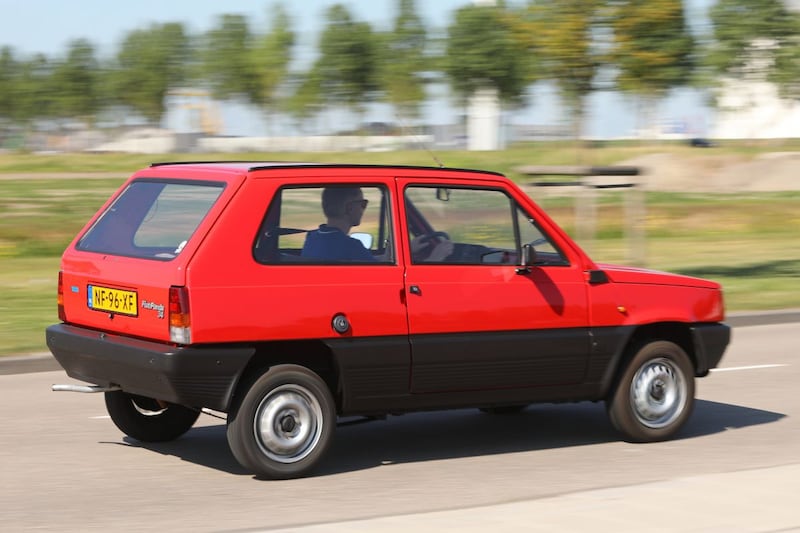
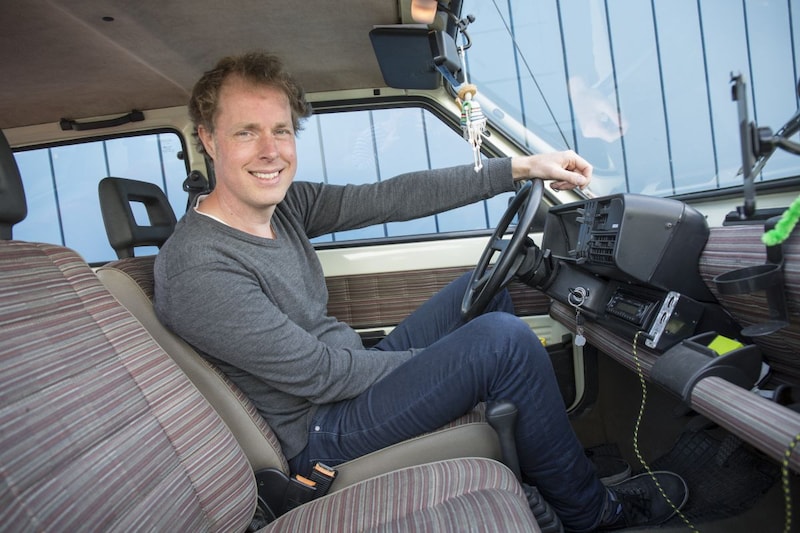

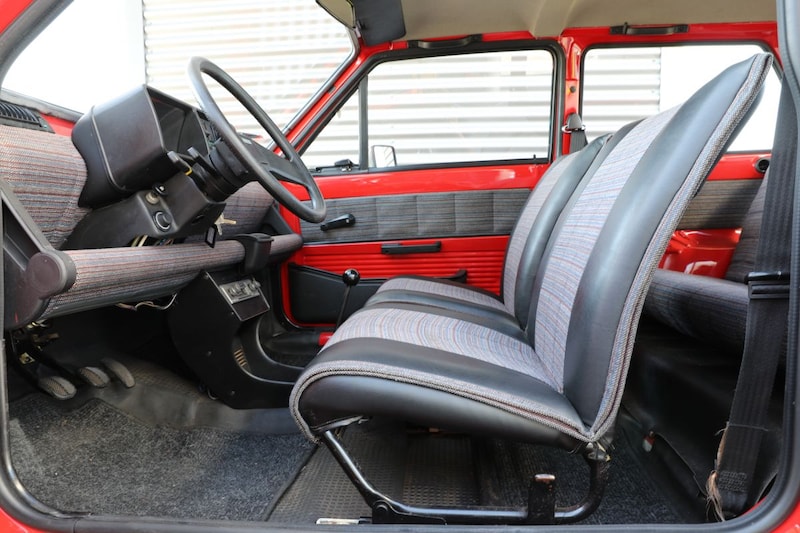
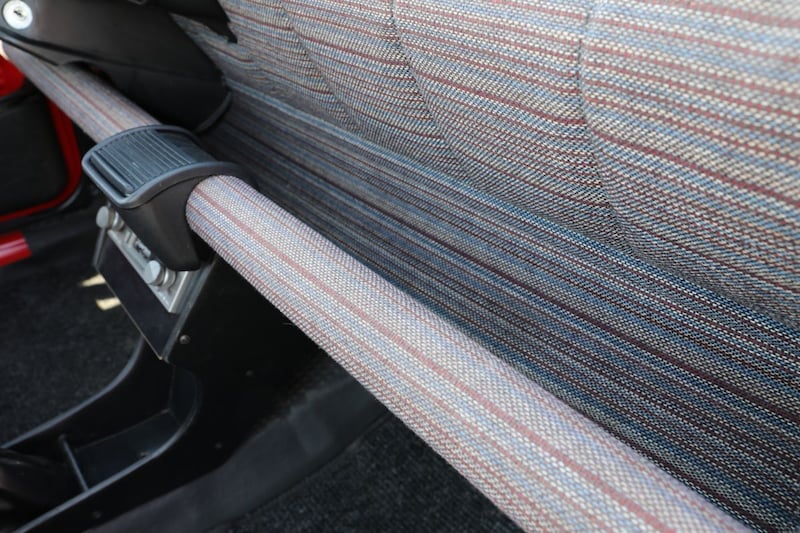
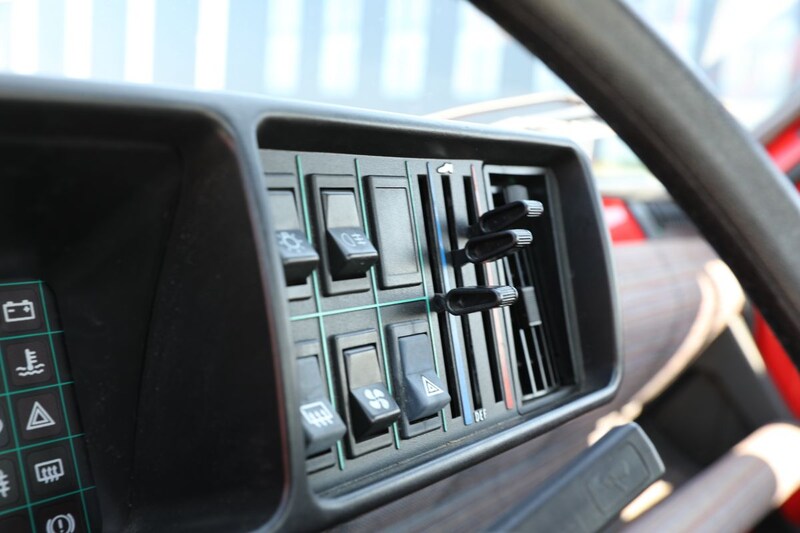
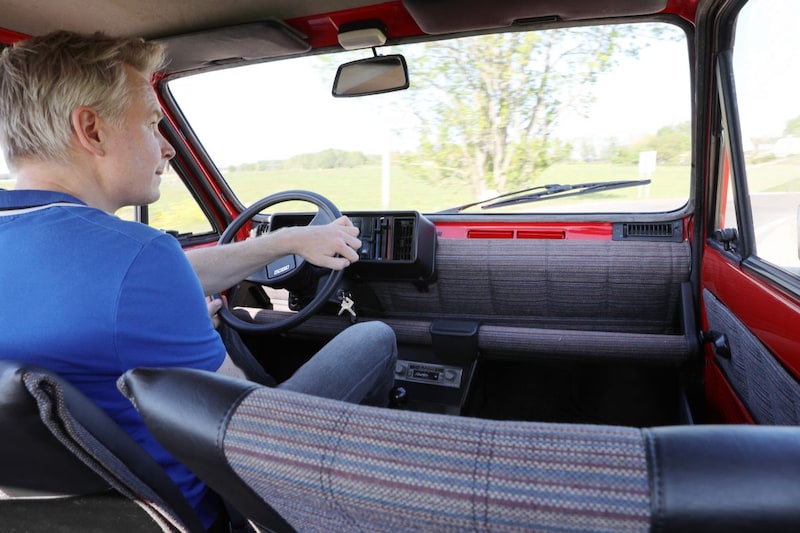

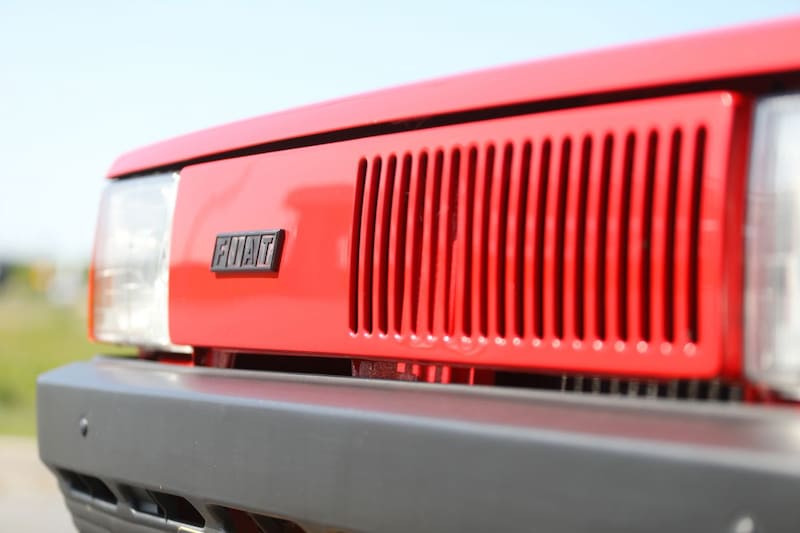


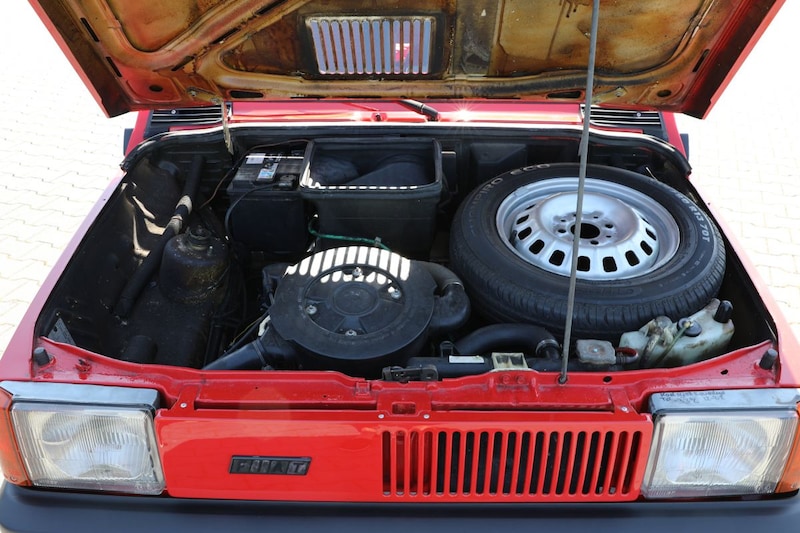

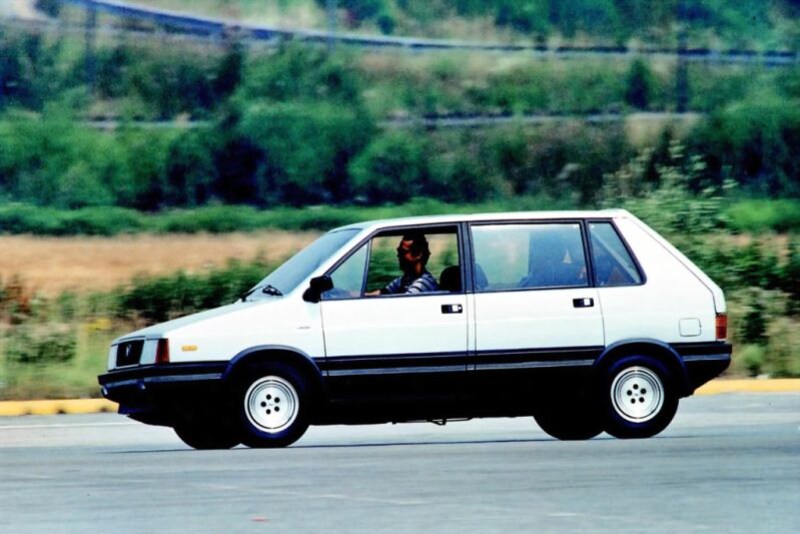

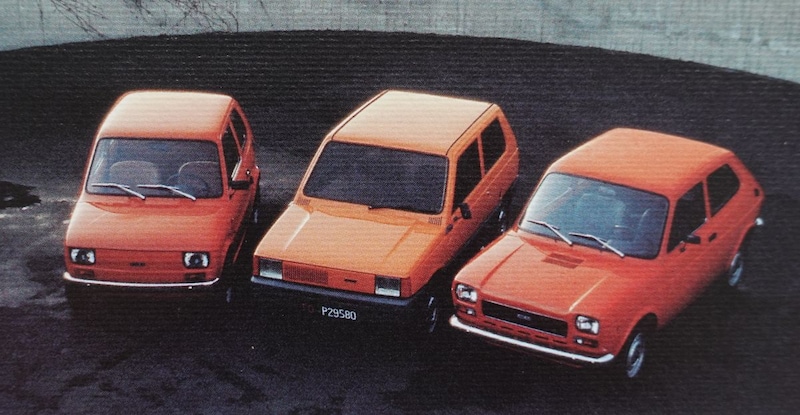



With its simple design and well thought-out construction, the Fiat Panda is already a legend when it was launched in 1980. But there are more factors that play a role in the successful career of the little Italian.
A car in this square shape, according to the philosophy of efficient simplicity, it was simply never seen before. Does the form follow the function or is it perhaps the other way around? Or do they go hand in hand and has the little Italian become such a success? Before we can answer these questions, let’s get back to the basics. The Panda’s bloodline goes back to 1936, when Fiat presents the 500 Topolino: a compact model with two doors, separate fenders, a small tailgate and the engine in the front. Simplicity trumps; affordable and therefore accessible for Gianni with the cap. At a time when only one in 200 Italians own a car, you can buy a Topolino, a ‘mouse’, for about 10,000 lira (after adjustment for inflation about 11,500 euros). The starting shot to make the people mobile has been given, after which the Topolino will last for almost twenty years.
In 1957, Fiat unveiled its successor, a car that surpasses even the Panda in prestige and historical importance: the Nuova 500. In other words, ‘the five hundred little’, the cute egg that even non-car connoisseurs immediately identify. Only the Beetle, the Mini, the 2CV and maybe the 911 do that. The cinquecento is becoming the symbol of urban Italy, but the rest of the world is also very fond of the unique round design of Dante Giacosa – who was also closely involved in the Topolino. Nearly two decades and four million 500’s later, the 126 (launched in 1972, three years before the 500’s retirement) has the thankless task of getting any close to its illustrious predecessor. In any case, the design is completely different. Square, more conventional, although Fiat sticks to the engine in the back. And what probably no one expected, happens anyway: Fiat sells almost 800,000 more of it than the Nuova 500. Although this is mainly because of the unprecedented popularity in Poland, where the ‘Polski Fiat’ left the band until the year 2000 (!) rolls. At Fiat in Italy the plug is already in 1980, where the 126 and the slightly larger 127 (in production until 1983) have to make way for… the Panda.
Distrustful
A versatile, modular interior is an important part of the Panda concept. More than ever, Fiat is committed to practicality for the lowest possible price. The newcomer cannot be more expensive to produce than the 126. ‘Do more with less’ is the mantra that haunted the minds of Giorgetto Giugiaro and Aldo Mantovani in the summer of 1976. The chief designer and technical man of the then still young design house Italdesign locked themselves up in a house in Sardinia for two weeks (maybe they sat on the terrace all day, history does not mention that) to work on project Zero. The story goes that, while sitting / lying on their chaises longues by the pool, the idea for the hammock interior originated.
Giugiaro says about this period: “At Fiat we had to deal with ten or twenty different interlocutors who looked at us suspiciously. They were especially suspicious of me; an external designer, after generations of in-house designed models like the 600, 500, 850, 126. My idea was to make a minimalist car, spartan in production way too. But sympathetic. So sympathetic that the Renault 4 and the Dyane should leave the field. So far reduced to the essentials that Umberto Agnelli (then vice president at Fiat, ed.), Who played the referee, exclaimed: “But give that car at least an extra two centimeters of glass!”

Fiat Panda clay model between 126 and 127
One of Fiat’s conditions to save costs and weight is that only flat glass may be used all around, even for the windscreen. More a pleasure than a burden for Giugiaro; his characteristic, sleek drawing style fits in seamlessly with this. He demonstrated this again in 1978 with the concept car Lancia Megagamma, a car that has a significant influence on the Panda with its angular, MPV-like appearance. It is clear from the kick-off that it will have a straightforward appearance. “I designed it like a refrigerator, like any household appliance,” said the grandmaster. Nevertheless, the then 38-year-old Giugiaro manages to make more of it than a refrigerator on wheels. Proportionally, the 3.38 meter long Panda is right on all sides, with a nice 1 / 3-1 / 3-1 / 3 division of engine compartment, doors and stern. The black or gray painted underside of the side panels (no, it is not plastic!) Is in line with the bumpers. Characteristic of the Panda, just like the asymmetrical grille. The details add the right dose of whimsy. The longer you look, the more you see: the subtle shoulder line through notches in the sheet metal, the small air grids under the windshield, that black ‘block’ at the bottom of the (optically continuous) A-pillar, which serves as a cover for the hinge, the notch at the push button of the door, the flared front wheel arches, the ‘cut’ rear wheel arches, the single windshield wiper, the ‘channel’ above the rear side windows, the narrow black edges along the roof (covering the welding seam on the roof and side panel), the little round flashing lights on the front screens… The Panda is like a Beatles song; it seems so simple, but just make it up.
Pragmatic simplicity
The Panda’s interior is just as minimalist as the exterior. So simple, it takes a long time to think about it. Fiat is wise enough to also leave the design of this to Giugiaro, so that the interior and exterior form one coherent whole and do not rub together like two separate worlds of two different design agencies. Inside, the theme of ‘doing more with less’ is expressed in optima forma. The instrumentation consists of no more than a speed and fuel gauge, supplemented with the most necessary warning lights. The adjacent black plastic ‘bin’ is reserved for a pair of pressure switches and the ventilation and heating control slides. For the rest, the dashboard is little more than an upholstered gutter with a sliding ashtray. Giugiaro borrowed the idea of such an elongated storage box from the Citroën 2CV. Talk about pragmatic simplicity. The doors are also fitted with a piece of fabric to dress up the sprayed metal inside. The biggest attraction of the Panda interior is the furniture. With their simple tubular frame, wafer-thin upholstery and minimal padding, the chairs are little more than glorified hammocks. Tilt them forward and you come to a rear seat that can be adjusted in seven ways for the most flexible possible seating, lying or loading space. With its flat floor, generous headroom and multifunctional sofa bed, the Panda is the epitome of practicality. And it looks nice too.

Fiat Panda interior
In February 1978, a select group of loyal dealers and customers were allowed to secretly browse prototypes of the Rustica, at that time the working title for the newcomer. Fiat is aiming for an entry-level price of 2,800,000 lire (approximately 1,450 euros, slightly less than 11,000 euros today), which is in line with the prices of the French competition. But then at the beginning of 1979 all hell breaks out in the Italian car factories; the unions want to prevent the production of the Panda from ending up in the center and south of Italy instead of the north. The riots include twenty pre-production Pandas in flames. When calm has returned in the early 1980s and the Panda is officially presented to the public, the previously communicated starting price turns out to be impossible. Entry-level model 30 costs on the home market not 2.80 but 3.97 million lire. Converted slightly more than 2,000 euros in 1980 and, after adjusting for inflation, more than 15,000 euros now. Despite the fact that the Panda is more expensive than its foreign competitors, 70,000 orders are recorded in the first two months.
Like a monkey
When the first owner of the red Panda 34 in the photos ordered his or her car in 1985, he had to pay 11,999 guilders, which would now be approximately € 10,500. We will of course not pass up an offer to deal with this style icon. Because of previous experiences in the Panda of colleague Nic de Boer, I know a little bit what to expect. In all respects it is back to basics: tinny doors, rudimentary furniture and sitting like a monkey, due to the definitely not optimal ergonomics. My shin leans against the (optional) center console, comfortable is different. But the small four-cylinder is really good and you can still keep up with modern traffic despite the modest specifications, although good anticipation is a requirement. As well as being able to ignore engine noise. The straight-line stability is fine, the crosswind sensitivity is not too bad and the narrow exhaust produces a tough hum. We are less enthusiastic about the bouncy chassis and the resulting lack of driving comfort. The steering is quite indirect and the Panda is considerably understeered on its narrow tires. Shifting is a bit tricky and the fact that you are close to the windshield with your head does not exactly contribute to the feeling of safety. And that is hardly present due to the high biscuit tin content of the Panda … Despite its shortcomings in modern times, this square Italian can count on my infinite sympathy. Its cuddly factor remains as high as ever. The reality is that the Panda has simply been overtaken by the years. But the unique concept and its magisterial elaboration, in which form and function go hand in hand, continue to impress to this day.

Fiat Panda interior
Technology and life course
To keep costs down, Fiat dives into the stock bins of the 126, 127 and 850 for the Panda’s engineering. The base engine for the Panda 30 is the air-cooled twin-cylinder of 652 cc from the 126, the Panda 45 uses the water-cooled 903 cc. four-cylinder of the 127 and for export in 1982 the old 843 cc four-cylinder of the 850 (34 hp) is dusted. The front suspension consists of MacPherson struts, the rear wheels are connected by a live axle, which is suspended from leaf springs. Simple, cheap and efficient, just like the rest of the Panda. In 1983 Fiat added the 4×4 to the range, the ultimate mountain goat, which is built at Steyr-Puch in Austria. In 1986, with the first facelift, the new Fire petrol engines are introduced, as well as a 1.3 diesel. The facelift models have a different rear axle construction and you can recognize them by, among other things, the ‘normal’ grille and the ‘normal’ rear wheel arches. In 1991, shortly after the arrival of the electric Elettra, a second correction round followed on appearance (including a slightly different grille) and technical (including CVT automatic transmission and a 1,100 cc Fire engine) flat. In Spain, the Fiat Panda is also built under license as a Seat Panda, after 1986 we know it as Marbella.
When the second generation Panda is presented in 2003, almost 4.5 million original Pandas (type 141) have been built. In the Netherlands, 1986 was the peak year in terms of sales numbers with 10,539 units. According to data from CarTalk International, there are currently 1,833 Pandas type 141 registered.